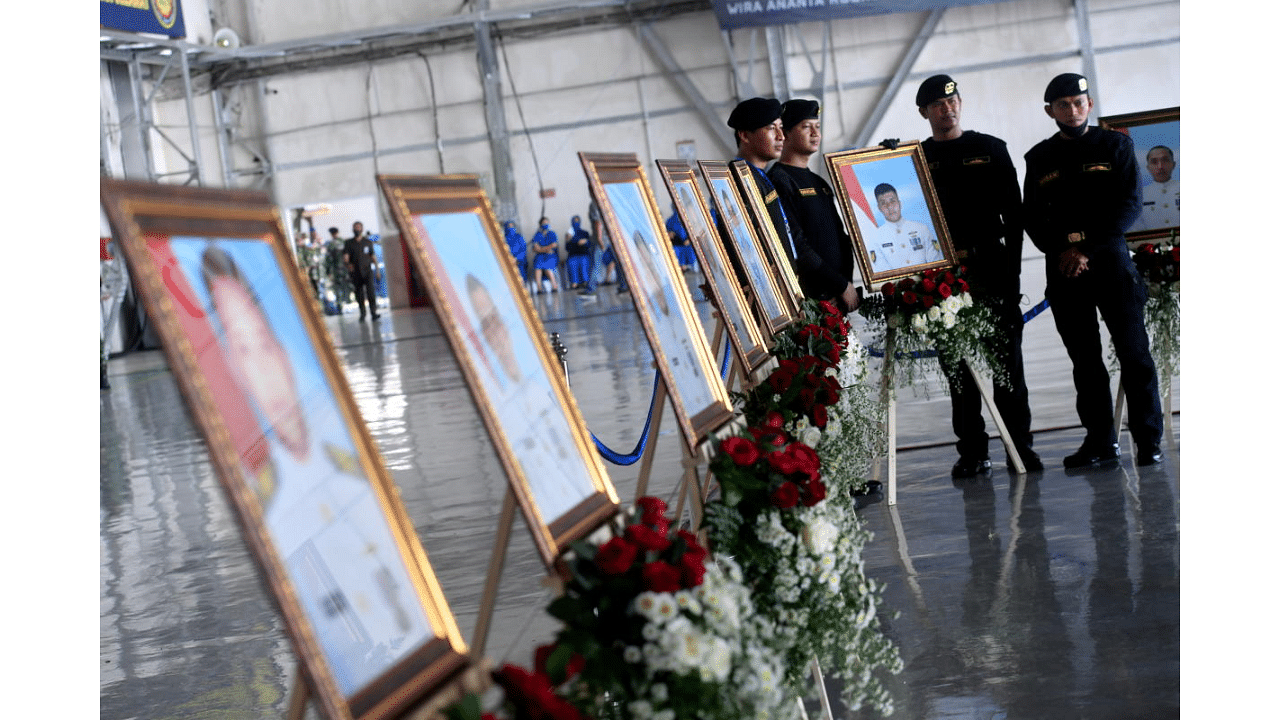
The Indonesian Navy recently lost a submarine that sank off the coast of Bali which was found split into three pieces on the seabed, killing all the 53 sailors on board. The submarine KRI Nanggala 402 disappeared after it requested permission to dive during a live torpedo firing drill. The ill-fated Nanggala, like all submarines in peacetime, trains for war as effectively as possible, in the knowledge that this will contribute to its prevention.
The KRI Nanggala 402 was a Cakra class submarine of Type 209/1300 attack submarines developed by Howaldtswerke-Deutsche Werft of Germany that were bought and commissioned by the Indonesian Navy in the 1980s. In 2012, the 44-year-old Nanggala underwent a midlife refit to extend its serviceability for a few more years.
Submarines have pressure hulls, which withstand the hydrostatic pressure at the depth at which the submarine is designed to operate. Each submarine hull is designed to withstand the pressure up to a certain depth beyond which it would simply crush due to the hydrostatic force at that depth. For this reason, every submarine has a diving depth. Generally, the thickness of the hull and the type of material decide the maximum crushing depth of the submarine.
Similarly, in the case of the Indonesian submarine, it was suspected to have a power failure which resulted in the failure of some control system and therefore, may have lost control and sunk beyond its crushing depth. It is highly impractical for a submarine to be designed to withstand a pressure of up to 730 metres of water. This was what would have led to the submarine hull being broken into three pieces as preliminary findings indicate.
The underwater environment is a dangerous one and therefore submarines face many perils of the deep. Even a small fire or gas leak inside a submerged submarine can have catastrophic consequences. A collision with another vessel or grounding may be much more serious.
Very few submarines have been fitted with escape pods, but if sailors are trapped in a sunken submarine there are other ways of getting them out safely. Locks allow submariners to escape by first climbing through an inner door or hatch and sealing it tightly behind themselves. They then partially flood the small volume before the outer hatch swings open, but this two-door system means they do not need to flood the entire boat. Some navies have special mini-submarines small enough to fit aboard an airplane. These can be quickly flown to a sunken submarine and used to rescue the crew.
Several of the 40-odd countries which operate submarines including France, Israel, India and China have had their share of losses due to underwater accidents. However, given the sizes of the US and Russian submarine fleets and the intensity of their underwater operations, these two countries have suffered the most tragedies.
In August 2000, the Russian nuclear-powered submarine K-141 Kursk vanished in the Barents Sea. Russian authorities later determined that the vessel sank after a torpedo on board unexpectedly exploded. The first blast then triggered the explosion of several other warheads.
In April 1963, the USS Thresher, an atomic submarine, sank in the Atlantic Ocean, killing its entire crew of 129 sailors and civilians when the submarine unexpectedly plunged to the seabed roughly 300 miles off the coast of New England. In between these two losses, several nations have suffered severe underwater tragedies.
The Nanggala is similar to the Shishumar class submarines of the Indian Navy and is from the same German manufacturer. The Indian Navy commissioned its first submarine INS Kalvari in December 1967 and initially, the INS Nistar served as a submarine rescue vessel since 1971.
Thereafter from 1989, the INS Nireekshak functioned as a diving support vessel and as an interim submarine rescue vessel. Only in December 2018, the Indian Navy inducted two Deep Submergence Rescue Vessels to tackle the challenges of its underwater fleet.
In the case of the Nanggala, regional naval cooperation was possible due to the initiative of the International Submarine Escape and Rescue Liaison Office (ISMERLO) efforts. The ISMERLO is an organisation that aims to facilitate an international response for a distressed submarine and to improve the ability to respond to calls for assistance through its coordination role.
Though ISMERLO is a NATO organisation, it supports all submarine operating nations with a humanitarian objective to save lives at sea. It issued an alert to coordinate the rescue of the disabled Indonesian submarine and the Indian, Singaporean and Malaysian navies swung into action to contribute their mite. The Indian and Singaporean navies deployed their underwater rescue vehicles to get visual confirmation of the wreckage.
(The writer is Secretary, Institute of Contemporary Studies Bengaluru and a former Professor of International Relations and Strategic Studies, Christ Deemed to be University, Bengaluru)